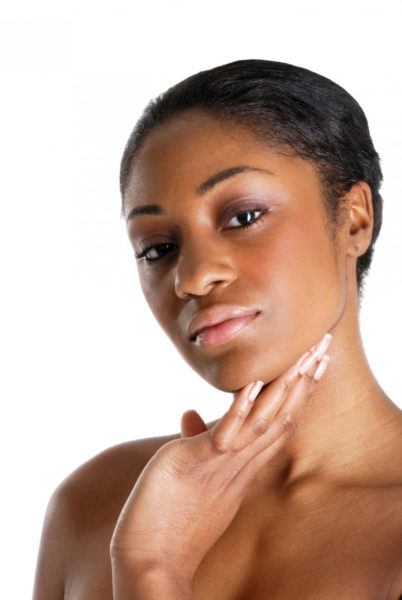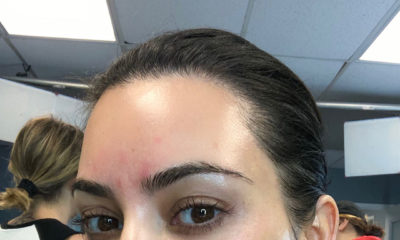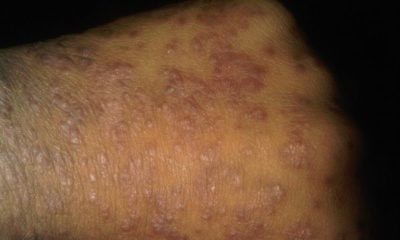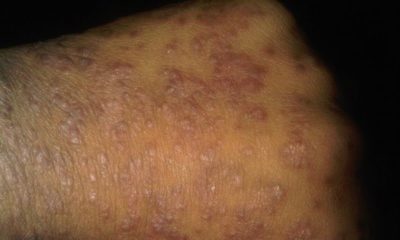Features
Lola Ray: Psoriasis… A Snapshot
 I was watching an episode on Ebony Life TV a few years back where one of the guests spoke about suffering from psoriasis. ‘Huh?’ I thought to myself. ‘Do people in Nigeria even get that?’
I was watching an episode on Ebony Life TV a few years back where one of the guests spoke about suffering from psoriasis. ‘Huh?’ I thought to myself. ‘Do people in Nigeria even get that?’
It wasn’t until I started telling people that I was doing my dissertation on Psoriasis, that I had a few people open up to me about how they had a family member or friend who had it.
Although it is not as common in West Africa as it is in the West, it should be brought to the fore, as it can be somewhat daunting for those who have it.
Let’s talk a bit about the skin first, shall we?
Our skin is made up of three main layers. The topmost layer is the epidermis which is followed underneath by the dermis and finally the subcutaneous or fatty tissue layer.
Now, within the epidermis are layers of cells which are produced from a ‘factory’ located on the interface between the epidermis and dermis called the basal layer.
In normal skin, it takes an average of 28 days for a cell produced from the ‘factory’ to travel all the way to the top of the of the epidermis where it finally sheds off. (I know, gross right?… we humans moult too).
So what happens in Psoriasis?
Psoriasis is a lifelong non-infectious inflammatory condition that affects mostly the skin but can also affect the nails and joints.
In psoriasis, the body becomes stressed by a combination of both external (e.g infection, stress) and internal (genetic) factors which sets the basal layer ‘factory’ into an overdrive mode. As such, an excessive number of cells are produced which make their way up to the top in only 4 days instead of the standard 28 days. Now one may think ‘this is great, I should have baby smooth skin all the time as I’m constantly getting rid of the old skin’; however, this is not the case because these rapidly manufactured cells sit at the top and don’t fall off, causing the ‘sufferer’ to have very scaly skin indeed. This appears as well demarcated, raised patches of dark brown skin which may have a covering of whitish scales. Although these patches can occur anywhere on the body, they tend to have a predilection for the scalp, elbows, knees and buttocks.
Because of its appearance people may worry that it is infectious, however this is not the case. It can, however, be hereditary, especially if both parents have it and doesn’t tend to show up until the 20’s or 50’s.
So how do I get rid of it?
Unfortunately Psoriasis is a life-long condition, which flares up and settles from time to time with some people going long periods of time without any new patches. In darker skin tones, the ‘healed’ areas may appear darker than the rest of the skin, leaving many sufferers rather self conscious and tempted to try bleaching creams. The skin tone eventually evens out however it could take up to 6 months.
As prevention is always better than cure, the first step is to avoid any known triggers.
These include:
Trauma– this can be caused by scratches, cuts and even surgical scars, which can cause psoriasis lesions to appear on those areas.
Infections– the bugs causing sore throats are particularly notorious for this, so be careful who you kiss :P.
Stress – this one is hard to avoid in Naija. Mindfulness meditation can be quite useful in dealing with stress. Personally, I love listening to the sound of ocean waves to relax.
Drugs– these include antimalarials such as chloroquine, anti-inflammatories such as Ibuprofen and blood pressure tablets belonging to the beta-blocker or ACE inhibitor groups. Always ask your chemist for side effects (and read the information leaflet yourself too).
Smoking– this can cause a type of psoriasis that affects the palms and soles. (It also ages the skin, so you may as well give it up).
Treatments
This depends on how extensive the psoriasis is, where it is located, how severe it is and if the nails and joints are involved.
Sounds like a lot, right? Take a deep breath, it’s not that complicated.
There are 4 main methods to treat psoriasis. Generally speaking, if one method doesn’t work, we move up the ladder to the next method.
We’ll start at the bottom.
Rung 1- Topicals or creams
The first line treatment in the UK is a combination of a steroid and a vitamin D cream, however some people may decide to use each component separately. Other ‘topicals’ include salicylic acid containing products, coal tar and the sometimes stingy ‘dithranol’. I have also heard people swear by our African black soap and shea butter, however haven’t found any scientific research studies to support this as yet.
If you wanted to make the trip, Israel/Jordan’s dead sea, Bulgaria’s black sea and Iceland’s geothermal blue lagoon are alternative treatment sources.
Rung 2: Light or phototherapy
There are machines, which treat psoriasis by providing a narrow spectrum of ultra-violet light from the sun’s ray (i.e UVA or narrow band UVB). This is particularly useful when psoriasis is widespread or when only the hands and feet are involved. It can be associated with a risk of skin cancer, which is quite uncommon in dark skin relative to other skin types. The main aesthetic concern in some individuals is not wanting to get any darker because believe it or not, black people tan the most easily of all the skin types.
Rung 3- Oral medicines
Once again if light therapy not effective, not safe to continue, or if joints become involved tablets are the next step. Granted they all come with side effects so one will need to have regular blood tests at the start to monitor for these. Ask your doctor for the range of tablets available.
Rung 4- Biologics
The most expensive and potent method of treating psoriasis involves getting regular injections or ‘infusions’, which thoroughly dampen the immune system. A series of tests need to be done prior to starting biologics to rule out any underlying infections and ensure a person is safe to take them. As before they are associated with many side effects so having regular blood tests is paramount. In Nigeria I believe this is done on a case-by-case basis and is out of pocket, so once again do consult your doctor.
I hope this has been helpful, and I look forward to answering any further questions you may have.
Photo Credit: Dennis Owusu-ansah | Dreamstime.com
























